Vintage 2017 Summary – Okanagan Valley
2017 was a very complicated and challenging year for BC wine. In the Okanagan the year started with floods that led to excessive growth and resulted in wildfires. Smoke and ash from the Elephant Hills, Oregon and Washington State wildfires was a major concern. Winemakers have not expressed any fears of smoke taint in the Okanagan Valley. Most vineyards experienced decreased yields of up to 20% compared to an average harvest. The quality of juice was very good. Lower yield means lower quantity but results in higher quality. This is the summary for Vintage 2017.
Special thanks to all the winemakers who found the time out of their busy schedules to provide input for this post.
Now for the Winemaker’s details!
Bradley Cooper – Consulting Winemaker and Black Cloud Owner
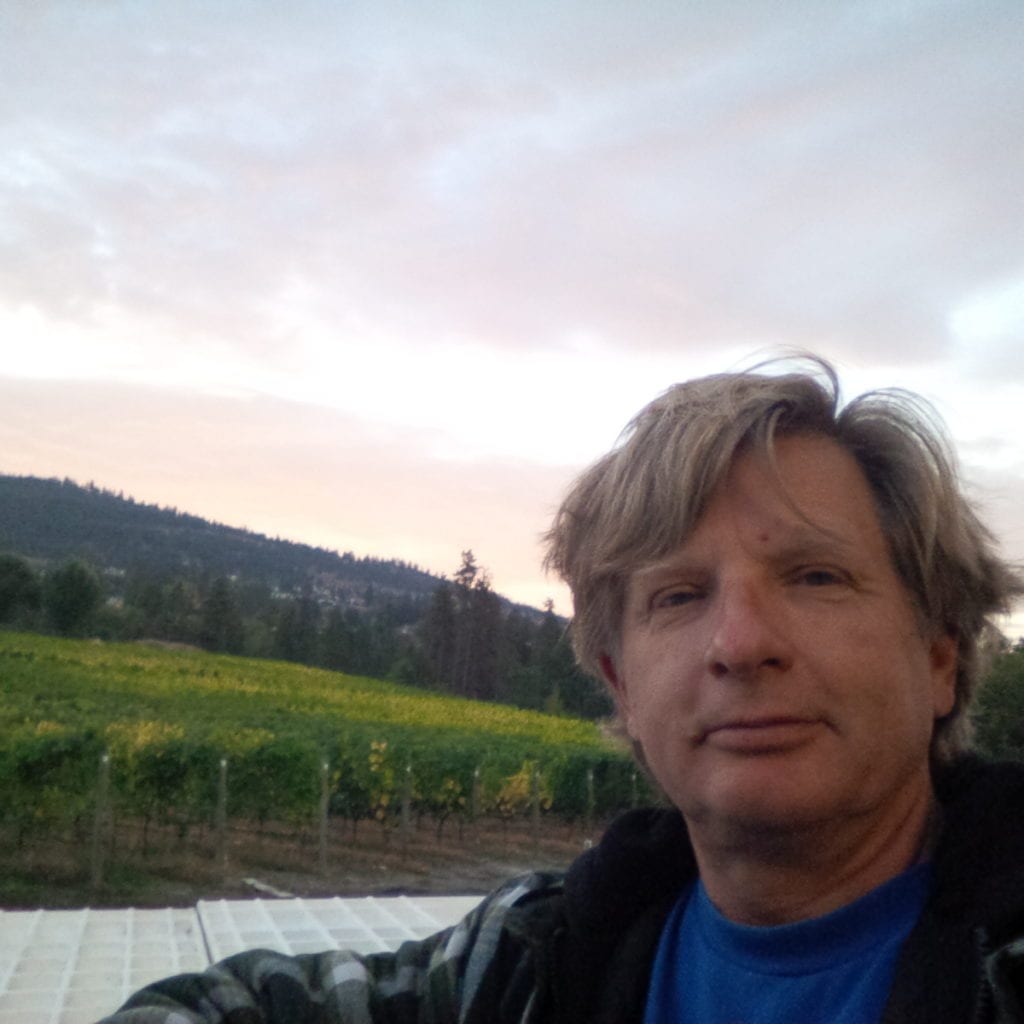
There was a bit of a delay to the growing season as the spring stayed cool for a little longer than we’d expect. Once flowering and fruit set was finally underway, the long, warm and a little smokey summer got cooking. I don’t know if it was the delayed spring, the late set or the smoke filtering out the sun but at the end of the year, my sources had picked 20% less fruit than their average harvest number. The quality was there and vineyards I work with didn’t anticipate any smoke taint issues. I’m seeing better than average quality across the board. At a time when the industry and market share is growing, it will be interesting to see how the wineries handle this natural downturn in output.
Daniel Bontorin – Consulting Winemaker and Owner Bottega Wine Studio™
Very balanced fruit. Many of the whites had to be picked early because the summer was so hot. The spring was cool with plenty of rain but the grapes were able to catch up with the summer heat. The yields are down, below average and maybe half what they were last year. It was a bad year for wildfires but smoke taint shouldn’t be an issue.
For Seven Direction, Daniel expects the Pinot Noir quality for the Rosé to be better than last year. Yields of around 4.8 tons/acre for the Pinot Noir and 4 Tons/acre for the Cabernet Franc. He has increased Rosé production to meet his customer demands.
Jak Meyer – Meyer Family Vineyards
 2017 was a very interesting year. We started out with a very cool, wet and late spring. We then went into 82 days straight of heat with no rain. This allowed the vineyards to get caught up and then short but perfect weather through Veraison with warm days and cool nights which is one of our best assets ripening slowly and retaining acidity. An early cold spell just at harvest time made for uncomfortable working conditions but not affecting the fruit at all. At the end of the day a very normal year with good fruit quality and volumes. We stressed about fires and smoke for most of the summer as this was one of the worst fire seasons in history but they were far enough away not to affect the grapes at all.
2017 was a very interesting year. We started out with a very cool, wet and late spring. We then went into 82 days straight of heat with no rain. This allowed the vineyards to get caught up and then short but perfect weather through Veraison with warm days and cool nights which is one of our best assets ripening slowly and retaining acidity. An early cold spell just at harvest time made for uncomfortable working conditions but not affecting the fruit at all. At the end of the day a very normal year with good fruit quality and volumes. We stressed about fires and smoke for most of the summer as this was one of the worst fire seasons in history but they were far enough away not to affect the grapes at all.
In the late summer, the high overhead cloud of smoke trapped in humidity. This caught some growers off guard with an unpredicted bout of powdery mildew. We had a maintenance spray program which fortunately protected us. Some vineyards had significant loss especially chardonnay.
A stressful year which turned out at the end to be quite a good and normal harvest. We all talk more about how it was a very weird year with many events and potential issues but that at the end no effect on the quality.
Kathy Malone – Hillside Winery
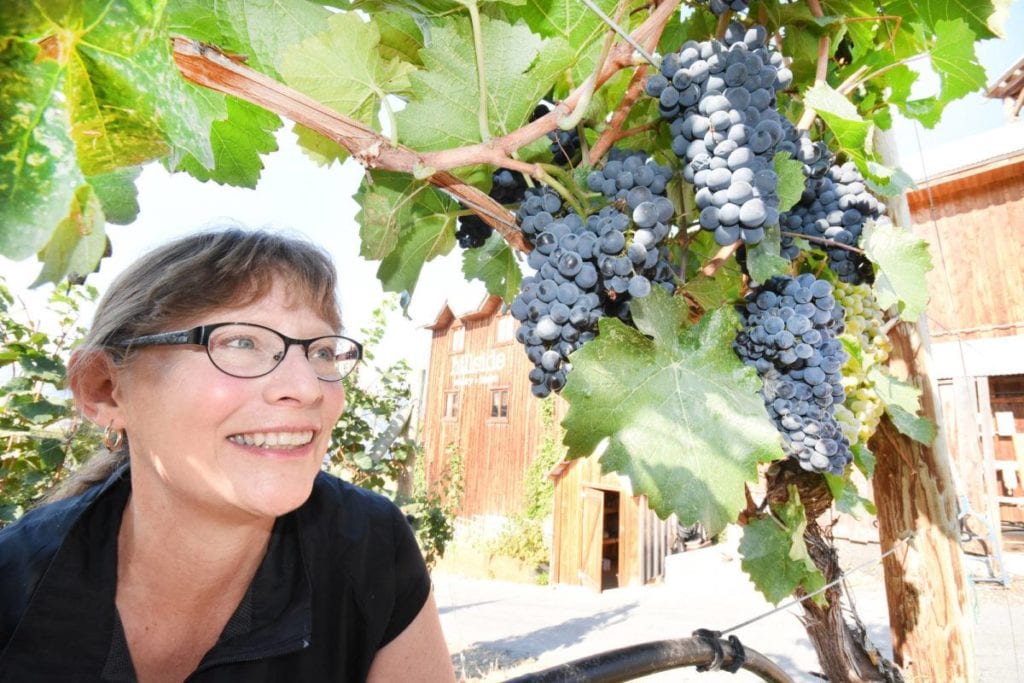
Yet another unusual growing season for us to learn from! Although it seemed off to a late start, compared to “average” we were only a few days late with bud-break, and right on track with bloom, veraison, and harvest start. The Growing Degree Days (GDD) for Summerland were 1416, comparable with 2013 (1415 GDD) and well above the 9 year average of 1366 GDD.
Ah but the smoke…
We were very fortunate this summer on the Naramata Bench to have no close fires and to actually have clear skies during the early weeks of veraison when grapes are thought most likely to pick up taint. The smoke cover during the hottest periods acted as a shade, preventing sunburn, loss of aromatics and excessive sugar production, while the warmth promoted tannin and flavour ripening.”
The Vintage 2017 wines in our cellar exhibit very nice aromatics and flavours and excellent balance.
U Andy Gebert – St Hubertus & Oak Bay Estate Winery
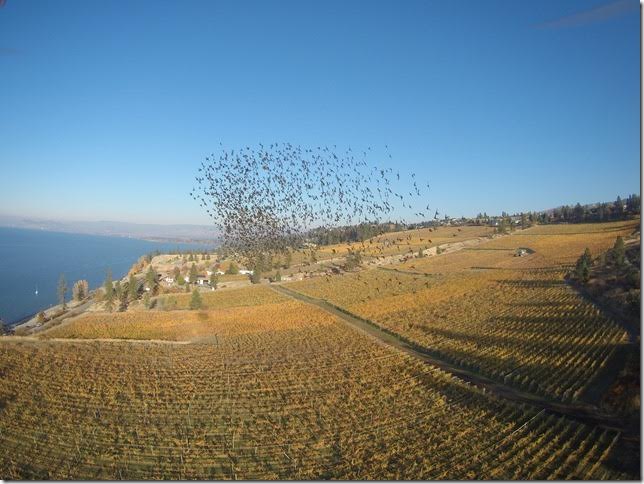
Jenn Triggs- Fashion Estates Winery
 This growing season was a roller coaster ride said by some fellow grape growers in the Oliver region. The weather this season shot us many twists and turns. Flooding in May and June. A 3 week late bud burst, and then to roll into a heavy fire season in July and August with the skies filled with smoke and blocking our beautiful sunrays delaying any early ripening and bunch development. Fellow growers saw the loss of crops due to these factors throughout this chaotic growing season such as powdery mildew, cutworm, and small or shattered fruit set for the clusters. This led to overall tonnage to be 20% lower than typical growing years. We were very fortunate not to lose any crop to cutworm, or powdery mildew at our organic Riesling vineyard. We introduced many sulphur treatments and canopy management practices to prevent these factors.
This growing season was a roller coaster ride said by some fellow grape growers in the Oliver region. The weather this season shot us many twists and turns. Flooding in May and June. A 3 week late bud burst, and then to roll into a heavy fire season in July and August with the skies filled with smoke and blocking our beautiful sunrays delaying any early ripening and bunch development. Fellow growers saw the loss of crops due to these factors throughout this chaotic growing season such as powdery mildew, cutworm, and small or shattered fruit set for the clusters. This led to overall tonnage to be 20% lower than typical growing years. We were very fortunate not to lose any crop to cutworm, or powdery mildew at our organic Riesling vineyard. We introduced many sulphur treatments and canopy management practices to prevent these factors.
For this harvest, we completed two separate pickings for our organic Riesling. The first being around September 24th. These grapes offered great acidity levels and flavours even at the lower Brix levels. Our second pick was completed on October 7th. The berries were in full ripeness and offered excellent concentrated flavours and balance.
Stay tuned for our 2018 releases of our brand new white blend. Also, our very special 5th-Anniversary bottle release as both are showing very well in the tanks.
Will Hardman – Deep Roots Winery

2017 was an interesting year for Deep Roots, and I’m sure many others, in many ways. The very wet spring delayed growth across all of our acreages while also hurting tourism for the industry as summer didn’t really get going until July. The record-breaking levels of Okanagan lake proved very challenging for our Syrah, Malbec, Chardonnay and Pinot Gris vineyards north of Naramata Village as we irrigate them by pumping from the lake.
Once summer finally arrived so did the smoke from forest fires in the Kamloops area and across the border in Washington and Oregon. Our crops were very fortunate to escape any damage from the fire or smoke. With the hot summer and fall, the 2017 vintage has the potential to be very special. We continue to grow on the production side of things as we will bottle 4,000 cases this coming year. All of our wines look great for the 2018 spring release and we’re very excited about our new release of a fortified port-style wine made from Merlot and a touch of Syrah.
Michal Mosny – GM & Winemaker LUNESSENCE Winery & Vineyard


Mark Simpson – Artisan Food and Beverage Group Inc.
2017 was a wet spring that brought with it disease pressure and a later fruit set. Some growers experienced bunch rot and cutworm damage. The reduced yield came from 3 weeks of rain in May leading to a weaker fruit set and smaller cluster formation. We had a hot summer but 3-4 weeks of shade from the wildfire smoke decreased heat units. The sugar content is down a full percent over previous years. So, 2017 is a normal year for sugars, whereas the previous 4 years have been hotter than normal and delivered higher sugar and alcohol levels.
There was a little frost around October 7th and some vineyards in low lying areas lost their canopy. Mark’s Hawk’s Vineyards kept their canopies which allowed for 3 more weeks of ripening for his reds. Between October 10-20th the night time temperatures were significantly higher than normal, allowing for longer hang time. The reds picked at the end of October were of good quality but 23-24 Brix. The grapes had good tannic ripeness that will lead to softer, elegant and lower alcohol wines.
2017 should go down as one of the top three vintages in the last 10 years.
Mark also provided input on Vintage 2017 in other BC wine regions that will be included in a later post.
Rob Westbury – Nagging Doubt Winery
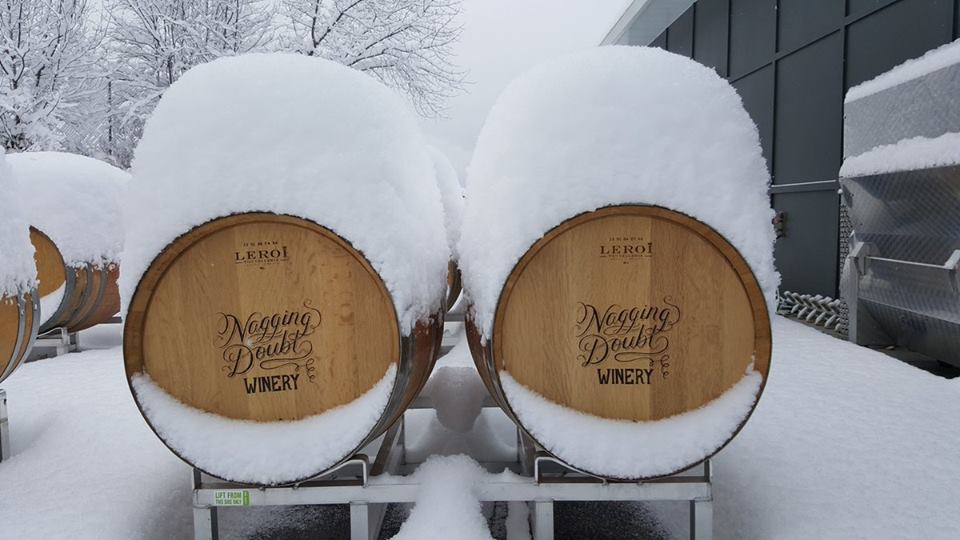 We are definitely biased, but we consider 2017 to be the greatest vintage ever because it produced our very first estate-grown fruit from our South East Kelowna vineyard!
We are definitely biased, but we consider 2017 to be the greatest vintage ever because it produced our very first estate-grown fruit from our South East Kelowna vineyard!
In reality, this was a challenging year but we couldn’t have been more pleased with the outcome and quality of fruit we received. The season started with a massive amount of snow and cold weather, so much so, it took a few extra weeks for the snow to melt at our site. Then we had to contend with a rainy, overcast spring. We put a huge amount of work into controlling powdery mildew, including several extra sprays compared to last season, and starting shoot and leaf thinning early to ensure we managed disease pressure.
It looked like 2017 was going to produce consistent wine with record-high temperatures throughout July and August, but the intense wildfires this summer generated so much smoke that we ended up with the equivalent of more than two weeks of overcast days. Luckily, the fires didn’t come too close to our vineyard, so we weren’t affected by smoke taint. In the end, our efforts paid off, and we had a beautiful harvest of clean, ripe fruit, from our early-ripening Siegerrebe (picked in early September) through to our late September/early October harvests of Chardonnay and Pinot Noir. They’re all tasting great, so far. We can’t wait to pour our first estate-grown wines!
Dominic McCosker – La Frenz Winery
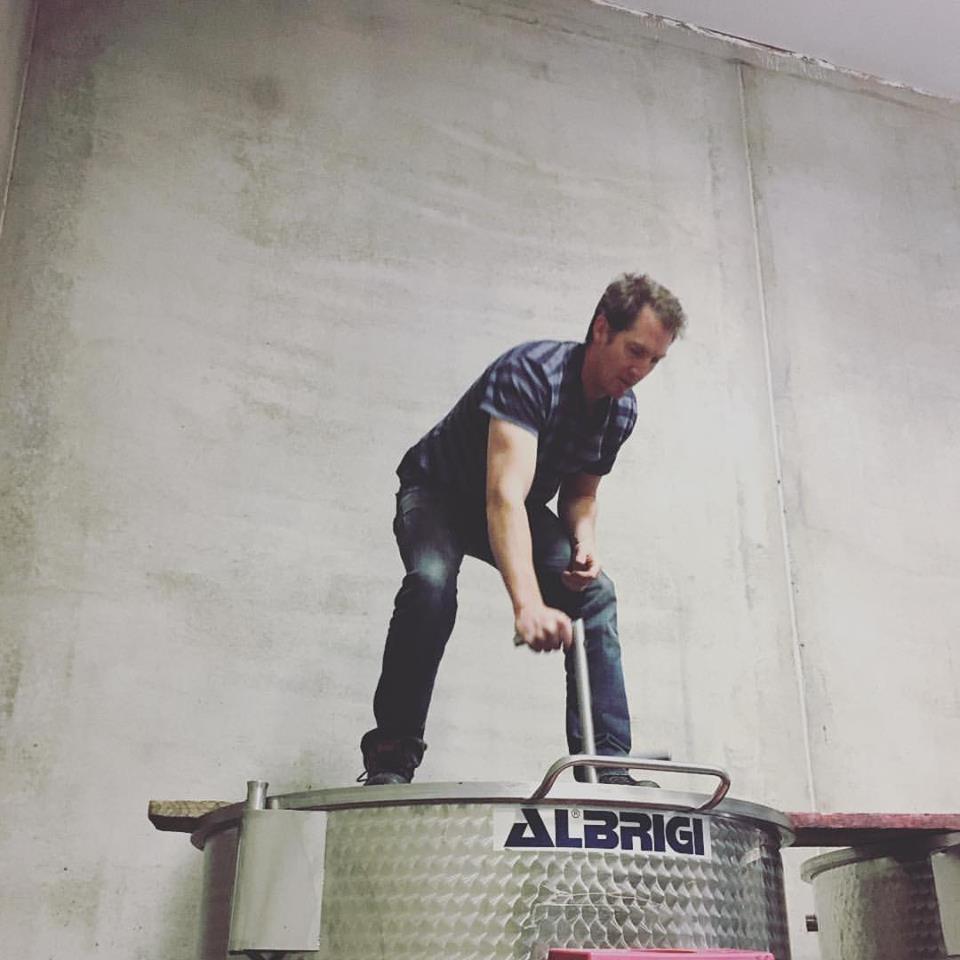
Vintage 2017 will be a fantastic one for La Frenz Winery! We at La Frenz are 80% estate grown fruit and feel with the amount of effort we have put into improving our vineyards over the past few years that with this vintage the fruit was outstanding!
The higher then normal rainfall in the Spring did increase the mildew pressure around the valley. This just required a little extra vigilant monitoring. The Summer had above average temperatures and was the driest in 40 years. This resulted in superbly ripe concentrated fruit if cropping levels and fruit exposure was correct.
The Autumn temperatures dropped and were relatively cool with the accumulated heat units among the worst in the past decade. So if people were hoping to leave the fruit to hang and ripen in October they would’ve been sadly disappointed.
The lack of rain during the harvest allowed us to pick when we deemed the fruit at its optimum ripeness and when logistically it was able to be, this coupled with the nice drawn out ripening season meant it was one of the smoothest harvests ever in the Okanagan.
All in all, it was a very enjoyable and smooth harvest with stellar quality fruit, which we believe will show in the wines on their release.
Grant Biggs – Kitsch Wines
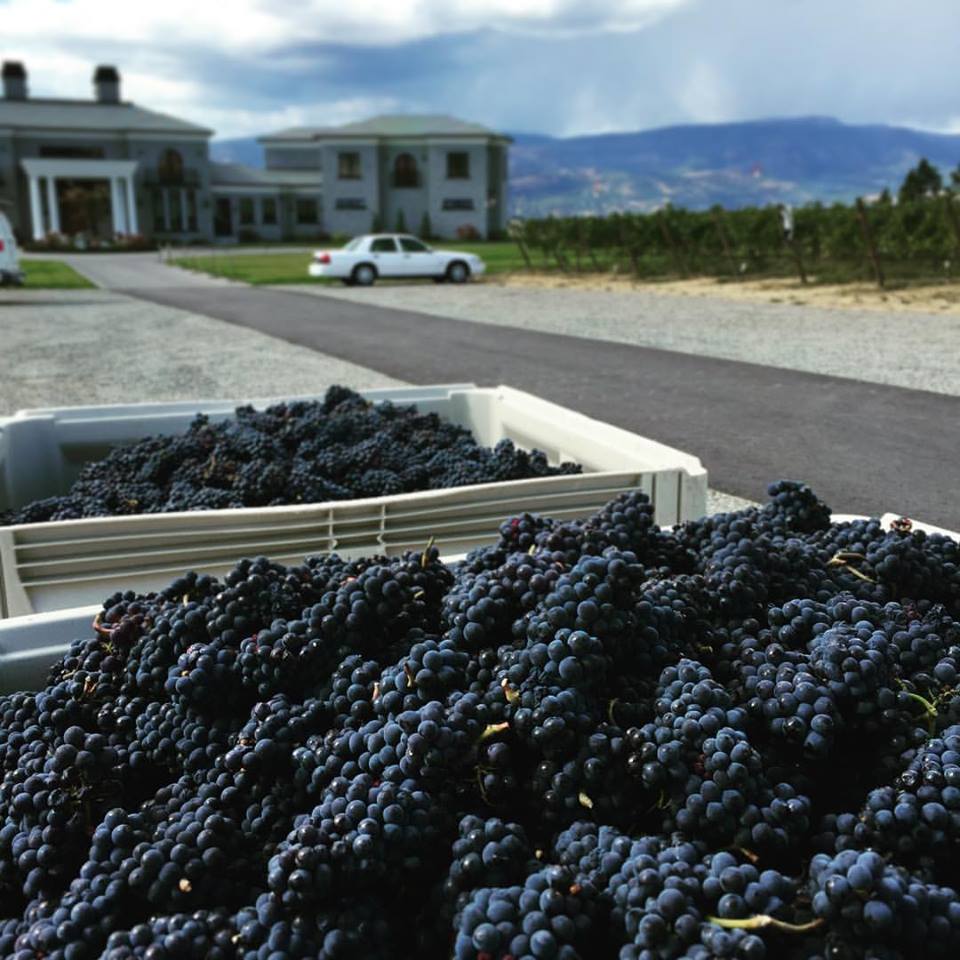
Vintage 2017 will be a memorable one for us at Kitsch Wines. It was definitely a year of extremes. A long, snowy winter kept the ground cold and delayed bud burst until May 4th on our estate block Chardonnay in East Kelowna. Spring saw more rainfall than ever causing flooding in the low lying areas of the Okanagan. Thankfully we are perched upon our beautiful South West facing slope in East Kelowna, avoiding any run-off or airflow issues. The summer this year was quite warm without any rain events from June – early September. There were a plethora of local wildfires that kept us in a haze throughout almost 6 weeks of summer. The smoke did, however, aid in lengthening the season by preventing some of the UV penetration. Our first grapes destined for our second vintage of Blanc de Blanc were harvested on September 2nd, a full 10 days later than the previous year.
We will have a second post later this week for the other BC Wine regions.
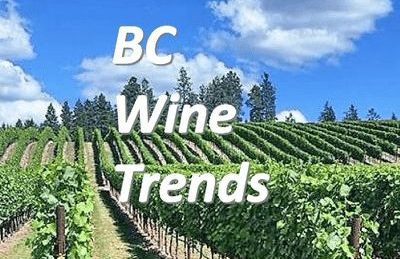
Great blog!
Liz: Thanks for the kind word. Best wishes to you for the Holidays. Julian